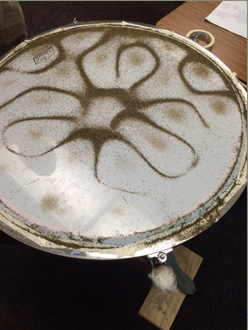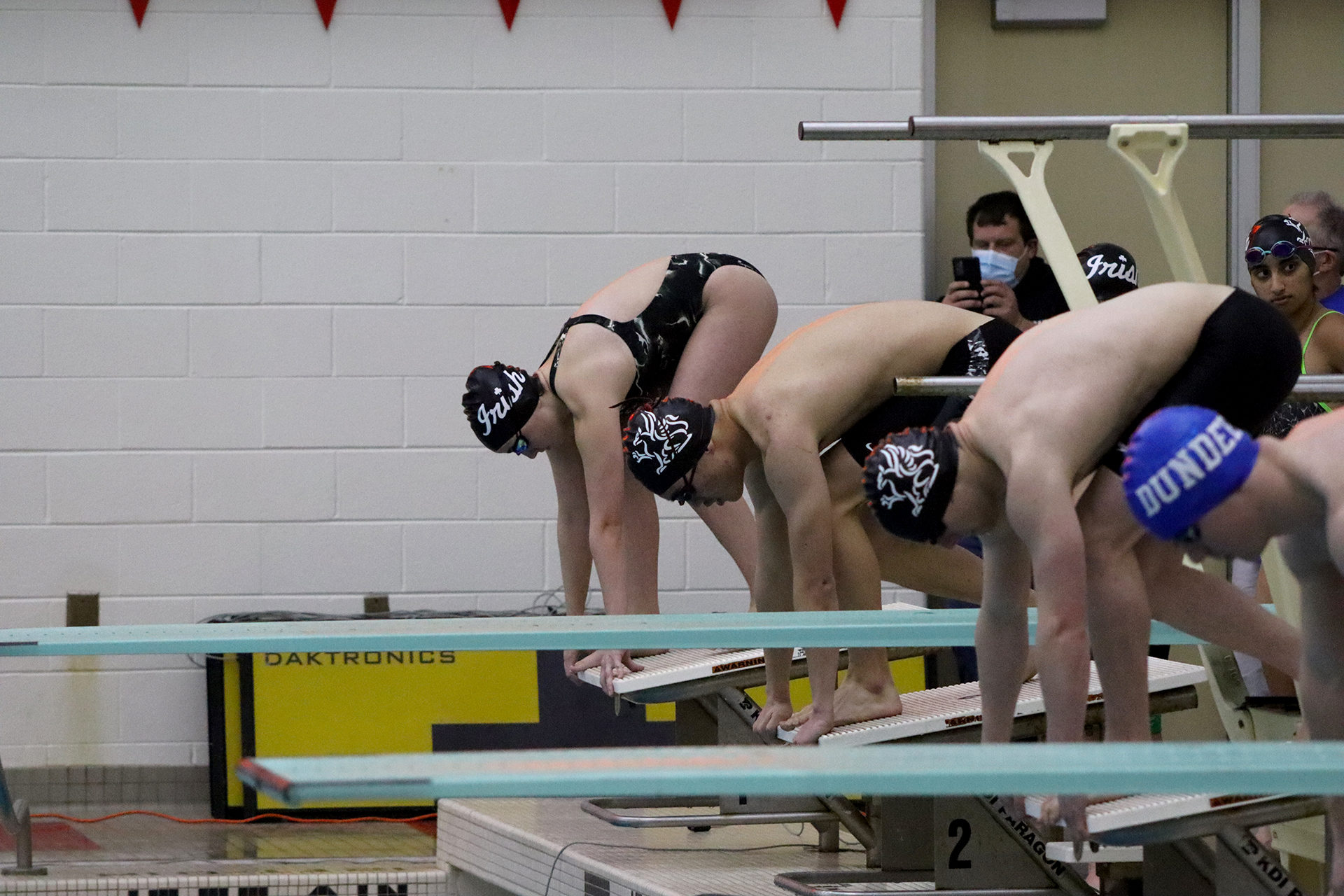Once again, Senior Projects
wow Greenhills audiences
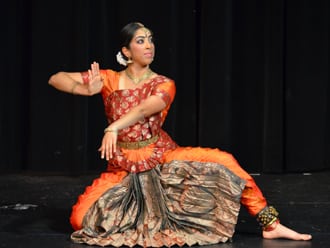
The Class of 2015 produced an exceptional crop of senior projects on topics ranging from beekeeping to Bharatanatyam, a form of Indian classical dance, and the results were typically stunning. Here, in no particular order, are descriptions of five of the projects:
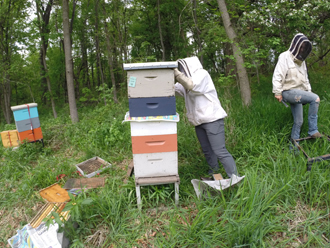 Beekeeping: The ongoing crash of global bee populations inspired Maeven Barry’s parents to take up beekeeping recently, and Maeven writes that she quickly found herself fascinated by the process – and the species. “I was in awe that these little insects had such a complex organizational system,” Maeven says. “They draw out hexagonal cells with the wax they create and fill them with honey, nectar, pollen, eggs, and larvae. I was also struck that each bee has a job depending on her age.” The main purpose of Maeven’s project, for which she was mentored by beekeeping expert Dr. Meghan Milbrath, was to educate young people about the importance of protecting and sustaining bees. “The current majority of beekeepers are over the age of 50,” she says. “If the bees are to be sustained the Millenials need to start beekeeping and doing more bee-friendly things in their daily lives.”
Beekeeping: The ongoing crash of global bee populations inspired Maeven Barry’s parents to take up beekeeping recently, and Maeven writes that she quickly found herself fascinated by the process – and the species. “I was in awe that these little insects had such a complex organizational system,” Maeven says. “They draw out hexagonal cells with the wax they create and fill them with honey, nectar, pollen, eggs, and larvae. I was also struck that each bee has a job depending on her age.” The main purpose of Maeven’s project, for which she was mentored by beekeeping expert Dr. Meghan Milbrath, was to educate young people about the importance of protecting and sustaining bees. “The current majority of beekeepers are over the age of 50,” she says. “If the bees are to be sustained the Millenials need to start beekeeping and doing more bee-friendly things in their daily lives.”
A website for The Alcove: The co-editors of Greenhills’ newspaper, Anne Snabes and Audrey Aspegren, decided to bring the Greenhills student newspaper into the 21st century by creating a website for it. In the process, they write, they also “learned how to lead students in other grades, make a Twitter feed, cook up some catchy headlines, and find out the which fonts are the best.” While building their project, which was mentored by Michigan State University Editor-in-Residence and former Free Press recruiter Joe Grimm, they learned how to incorporate multimedia into the news product, something that obviously hadn’t been necessary before. The end product, which can be viewed here, stands as a template for Greenhills student journalists moving forward.
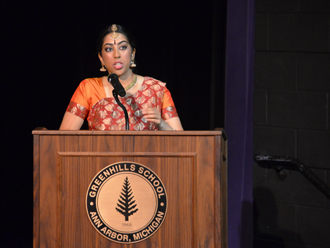 Exploring Bharatanatyam: When you’ve been studying the Indian classical dance form Bharatanatyam for 14 years, it’s only natural to want to continue. So for her senior project Pallavi Prabhu traveled to Bangalore, India for advanced study in the art form, which combines swift, intricate movement, gestures, and expressions to convey tales and characters from Hindu mythology. For her Greenhills audience, she performed three pieces, first explaining the stories expressed in each dance. At age 14 Pallavi completed her arangetram, a combination solo performance and rite of passage that demonstrates a dancer’s ability to perform at a professional level, so her trip to Bangalore was designed to help her share an improved understanding of a South Indian cultural linchpin stretching back more than 2,000 years. She was mentored by Sandhya Kiran and Roopa Shyamasundara. “If I had more time, I could have demonstrated more of the basics” of the art form, she wrote. “Overall, I thoroughly enjoyed the opportunity to pursue an activity I’m very passionate about, and share my experience with the Greenhills community.”
Exploring Bharatanatyam: When you’ve been studying the Indian classical dance form Bharatanatyam for 14 years, it’s only natural to want to continue. So for her senior project Pallavi Prabhu traveled to Bangalore, India for advanced study in the art form, which combines swift, intricate movement, gestures, and expressions to convey tales and characters from Hindu mythology. For her Greenhills audience, she performed three pieces, first explaining the stories expressed in each dance. At age 14 Pallavi completed her arangetram, a combination solo performance and rite of passage that demonstrates a dancer’s ability to perform at a professional level, so her trip to Bangalore was designed to help her share an improved understanding of a South Indian cultural linchpin stretching back more than 2,000 years. She was mentored by Sandhya Kiran and Roopa Shyamasundara. “If I had more time, I could have demonstrated more of the basics” of the art form, she wrote. “Overall, I thoroughly enjoyed the opportunity to pursue an activity I’m very passionate about, and share my experience with the Greenhills community.”
Remodeling the Green Room: When Sarah Ceccio and Meredith Mitchell decided to combine their respective interests in theater and interior design, the result for the green room in the Campbell Center for the Performing Arts cried out for a standing ovation. The intent: transforming a space that was cluttered with mismatched furniture from old shows into a welcoming and relaxing environment for nervous performers getting ready for their shows. And whatever they did, the area would still need to be passable as the connecting space between dressing rooms, stage wings, and backstage. Thanks both to their design expertise and to a generous gift from Martha and Steve Ceccio, Sarah and Meredith accomplished both of their missions. Next year’s performers will reap the rewards.
Cymatics: Seeing Sound: Perhaps it was inevitable that Nick Sandhu, familiar to all at Greenhills for his many appearances behind a drum kit, would choose to study cymatics, or the physics of making sound visible, as the topic of his senior project. “This is the science of seeing sound,” Sandhu writes. “Linking art, physics, and music in an attempt to achieve a better understanding of all three.” The method involves causing vibration in a flat metal surface sprinkled with sand or salt, known as a Chladni plate. Vibrations at different frequencies cause different symmetrical patterns to appear on the face of the Chladni plate, which is named after the German scientist widely considered the father of acoustics. Nick built three different Chladni setups from relatively inexpensive parts, relying heavily on the help of two mentors. “After completing my project, 14 years of musical studies carry new meaning,” Nick writes. “I now appreciate the relationship between sounds, music, art, and physics in a whole new way.”


